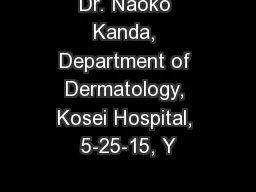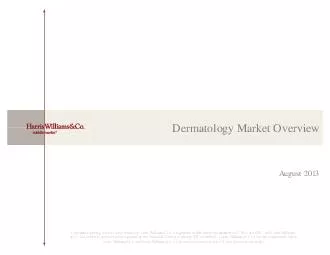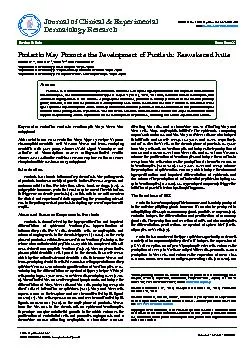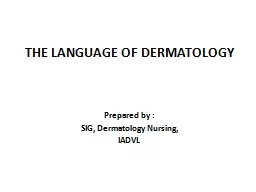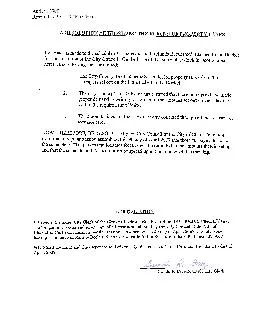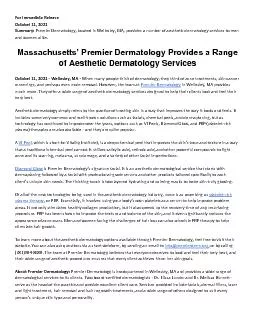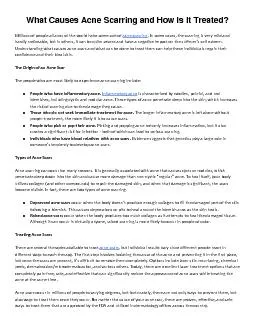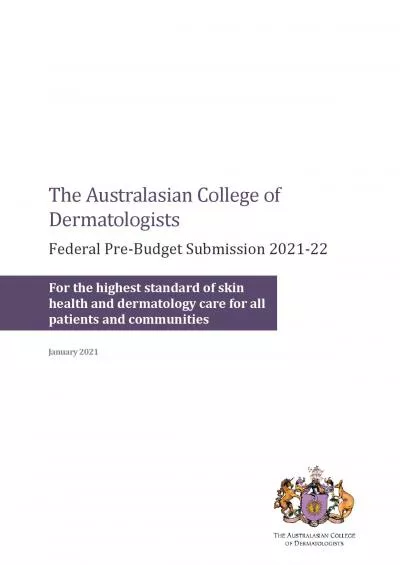PDF-Dr. Naoko Kanda, Department of Dermatology, Kosei Hospital, 5-25-15, Y
Author : conchita-marotz | Published Date : 2017-11-23
December 13Kanda N Hau CS Tada Y Watanabe Sthe Development of Psoriasis Reawakened Issue J Clin Exp Dermatol Res 4 198 Kanda N This is an openaccess article distributed
Presentation Embed Code
Download Presentation
Download Presentation The PPT/PDF document "Dr. Naoko Kanda, Department of Dermatolo..." is the property of its rightful owner. Permission is granted to download and print the materials on this website for personal, non-commercial use only, and to display it on your personal computer provided you do not modify the materials and that you retain all copyright notices contained in the materials. By downloading content from our website, you accept the terms of this agreement.
Dr. Naoko Kanda, Department of Dermatology, Kosei Hospital, 5-25-15, Y: Transcript
Download Rules Of Document
"Dr. Naoko Kanda, Department of Dermatology, Kosei Hospital, 5-25-15, Y"The content belongs to its owner. You may download and print it for personal use, without modification, and keep all copyright notices. By downloading, you agree to these terms.
Related Documents

